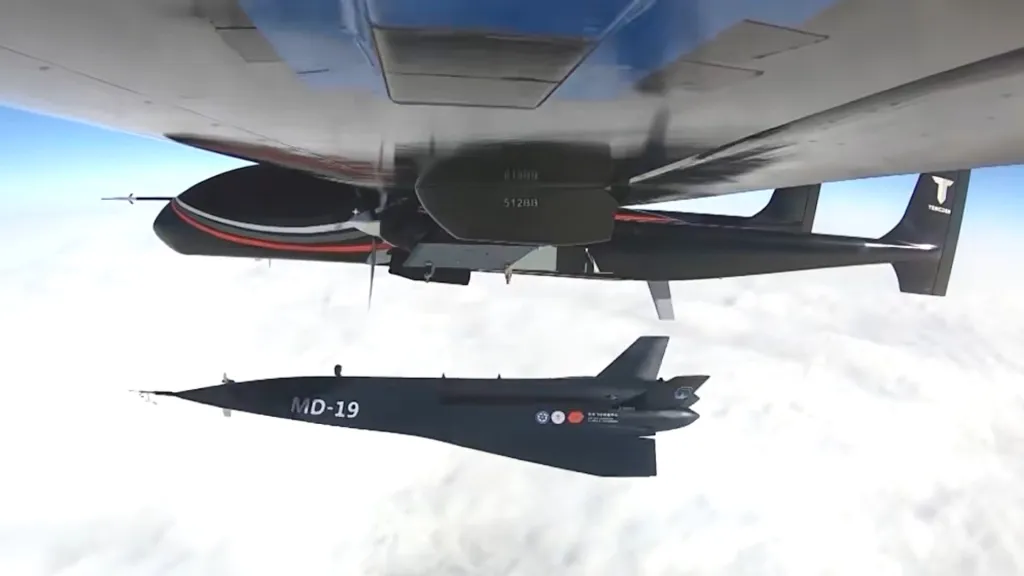 Image Source: The War Zone
Image Source: The War Zone
China is doubling down on the research and development of sophisticated unmanned aerial warfare capabilities, including a fleet of hypersonic drones and the upcoming launch of the world's first "flying aircraft carrier" drone mothership. These developments mark a new chapter in military technology and pose key questions for India's defense readiness.
China's Hypersonic Drone and Swarm Arsenal
In June 2025, China will start flight tests of the Jiu Tian (Jiutian) SS-UAV, a long-endurance, high-altitude unmanned mothership that can launch and command more than 100 AI-powered kamikaze drones in synchronized swarm attacks. The Jiu Tian, with an operational ceiling of 15,000 meters and range of 7,000 km, can also be used to carry precision-guided ordnance and serve as a command node for sophisticated drone operations. Its main threat lies in overwhelming enemy air defenses through sheer numbers and AI-driven tactics.
At the same time, China's hypersonic drone research program has rapidly made strides. The MD-19, MD-21, and WZ-8 drones all have speeds over Mach 5 and near-space altitudes, and they are nearly impossible to intercept with existing air defense platforms. The drones provide functions from deep reconnaissance to possible anti-satellite and kamikaze missions, and their operational deployment provides China with an insurmountable advantage in the region.
Smart Swarm Weapons and Countermeasures
Not only is China working on offensive swarms of drones, it has also introduced new barrage weapons intended to defeat enemy drone swarms. The systems fire concentrated barrages of projectiles to destroy incoming drones and are deployable on land vehicles or warships.
Implications for India
China's sudden development of unmanned and hypersonic capabilities poses a multifaceted challenge for India. The recent downing of an Indian S-400 air defense system by Pakistan with Chinese-supplied hypersonic missiles has revealed weaknesses in India's existing defenses. A widely reported incident by Chinese and Pakistani media has tarnished the image of India's top air defense asset being invincible, and how hypersonic and swarm tactics proved effective in contemporary warfare.
India has reacted by prohibiting Chinese parts in Indian military drones, sharpening procurement rules and speeding up indigenous development of sophisticated UAVs and counter-drone technologies. India's Defence Research and Development Organization (DRDO) has even tested a hypersonic missile with a range beyond 1,500 km, indicating an intent to catch up in this high-stakes arms race. India is also investing in multi-layered air defense, directed energy weapons, electronic warfare systems, and real-time satellite tracking to counter the threat from swarms of drones.
Should India Be Concerned?
China's developments in hypersonic drones and swarm warfare are a crucial change in the balance of military power in the region. Even as India is taking strong measures to counter these threats—via indigenous innovation, policy realignments, and emerging defense technologies—the tempo and magnitude of China's developments necessitate continued watchfulness and quick modernization. The threat is not merely technological but strategic, for these emerging systems may short-circuit decision-making time in a crisis, heightening the risks of miscalculation and escalation.
Sources: Army Recognition, Unmanned Airspace, South China Morning Post, LinkedIn, YouTube, 19FortyFive, Raksha Anirveda, Universal Institutions, IMR Media, Military Watch Magazine Aircraft Carrier, Asia Times, National Security Journal
Advertisement
Advertisement




